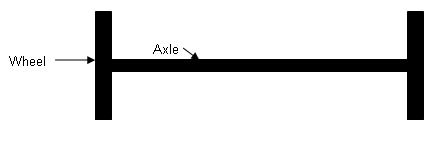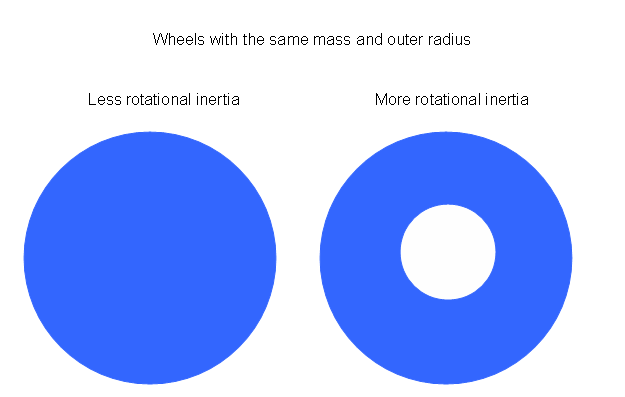Sandbox/Mousetrap
Energy Conversion: Spring Activated Vehicle (Mousetrap Car Competition)
Objectives
The objective of this laboratory is to design and construct a vehicle powered solely by a mousetrap mechanism. Moreover, each design will be entered into a competition, with the winning design being determined as the vehicle that travels the farthest linear distance.
Overview
Vehicles are used as a means of transportation. Whether used to transport commodities or people, they are dependent on what form of energy is to be harnessed. Automotives depend on the conversion of chemical energy into mechanical energy. Allowing this energy to move the vehicle is called propulsion.
Transferring chemical energy to mechanical energy to propel a vehicle is called a process. In an internal combustion engine, the first process is combustion. This allows for the piston to move the chalkshaft as observed. The combustion that occurs creates mechanical energy.
The next step is is how this energy is converted into propulsion. For this step, a drive train is employed. Drive trains consist of transmission, drive shafts, differentials, axles, and wheels. Drive trains also employ gears that allow for the transfer of power. The gear ratio can be calculated by the number of teeth on the input gear and by dividing the number of teeth on the output gear.
Finally, energy is transferred to wheels which creates the motion of the vehicle. For this motion to occur, an understanding of friction is needed. Friction resists motion. In order for the vehicle to move friction is necessary for the wheels to grip the surface. This is called traction. To get a better understanding of this concept, picture a a vehicle on a frictionless surface, such as ice. The vehicle will not move and the wheels will continue to spin. Traction opposes the forward motion of the vehicle.
For this lab, a mousetrap which has a spring will be the source of energy for a small vehicle (see Figure 1A). Remember in this case the potential energy stored in the spring will be converted into kinetic energy upon its release. How the vehicle is designed will determine how far it will travel.
Principles Involved in a Mousetrap Car
Friction: This is the force that resists the motion of two surfaces in contact. In a mousetrap car, power can be lost due to friction between the axles and chassis and between the wheels and the ground. Not all friction is bad; friction that prevents the wheels from slipping is called traction. In general, a design should reduce friction, but have enough traction so that the wheels do not slip.
Rotational Inertia: This is the resistance an object has to changes in rotation. The mass of the object affects the rotational inertia, the greater the mass, the greater the rotational inertia.
Rotational inertia (Figures 3 & 4) is also dependent on the location of the mass from the axis of rotation (Figure 5). The farther the bulk of mass is radially from the axis of rotation, the greater the rotational inertia.
Design Considerations
- Consider the power source; the position and length of the lever arm determine the torque produced.
- Too much weight may prevent the mousetrap car from moving; weight will also affect the car's momentum.
- Use CAUTION when handling mousetraps (mousetrap hammers snap at 70mph).
Design Constraints
- Only the Lego parts provided may be used.
- The vehicle must be powered solely by the mousetrap provided.
- The vehicle must have at least one wheel (no projectiles allowed).
- The mousetrap spring must not be physically altered.
- The vehicle may not receive a push at the start.
- The vehicle cannot be touched once it has left the starting position.
- Displacement distance will be measured; not the total distance traveled.
- If the car hits another object (e.g. the wall), distance will be measured at the point of impact.
Scoring
The design with the greatest displacement distance traveled wins the competition.
Materials
- Robolab kit
- Mousetrap
- Kevlar string
- Tape
Procedure
- Brainstorm possible designs for a mousetrap car.
- Sketch the design on paper.
- Construct the design based on the sketch.
- The mousetrap may be attached to the car by tape (try not to use excessive amounts of tape; all tape should be removed from the Lego parts before leaving).
- Load the mousetrap by winding the string around the drive axle.
- Once the design is ready, position the vehicle behind the starting line and release it.
- Once the vehicle comes to a stop, the current distance may be kept or quick modifications may be made and additional trials attempted. Each design is allowed up to three trials if time permits.
- Before leaving the room, the mousetrap car must be disassembled and all tape must be removed from the Lego parts.
Assignment
Individual Lab Report
Follow the lab report guidelines laid out in the page called Specifications for Writing Your Lab Reports in the Technical Communication section of this manual. The following discussion points should be addressed in the appropriate section of the lab report:
- Discuss the advantages and disadvantages of the design.
- Discuss the characteristics of the design that won the competition.
- Include spreadsheet with every team's results. Describe the results and talk about other designs in the class.
Extra credit will be awarded to the winner of the competition as described in the EG1003 Grading Policy. Make sure to get the sketch of the design signed by the TA. Get a photo of the design and attach it to the lab report.
Remember: Lab notes must be taken. Experimental details are easily forgotten unless written down. EG1004 Lab Notes Paper can be downloaded and printed from the EG1004 Website. Use the lab notes to write the Procedure section of the lab report. At the end of each lab, a TA will scan the lab notes and upload them to the Lab Documents section of the EG1004 Website. One point of extra credit is awarded if the lab notes are attached at the end of the lab report. Keeping careful notes is an essential component of all scientific practice.
PowerPoint Presentation (EGED I Only)
Follow the presentation guidelines laid out in the page called EG1003 Lab Presentation Format in the Introduction to Technical Presentations section of this manual.
| ||||||||



